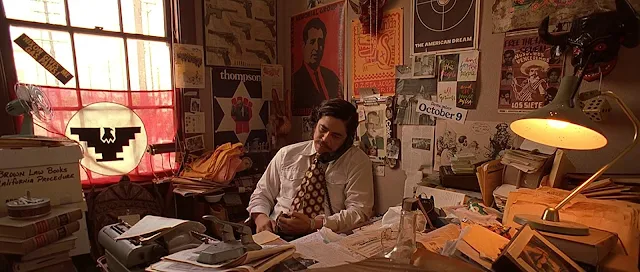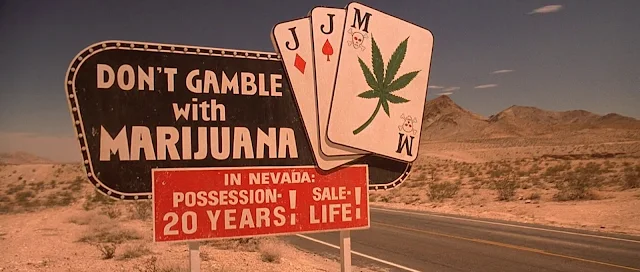A blog formerly known as Bookishness / By Charles Matthews
"Dazzled by so many and such marvelous inventions, the people of Macondo ... became indignant over the living images that the prosperous merchant Bruno Crespi projected in the theater with the lion-head ticket windows, for a character who had died and was buried in one film and for whose misfortune tears had been shed would reappear alive and transformed into an Arab in the next one. The audience, who had paid two cents apiece to share the difficulties of the actors, would not tolerate that outlandish fraud and they broke up the seats. The mayor, at the urging of Bruno Crespi, explained in a proclamation that the cinema was a machine of illusions that did not merit the emotional outbursts of the audience. With that discouraging explanation many ... decided not to return to the movies, considering that they already had too many troubles of their own to weep over the acted-out misfortunes of imaginary beings."--Gabriel García Márquez, One Hundred Years of Solitude
Search This Blog
Showing posts with label Ellen Barkin. Show all posts
Showing posts with label Ellen Barkin. Show all posts
Friday, September 27, 2019
Fear and Loathing in Las Vegas (Terry Gilliam, 1998)
Fear and Loathing in Las Vegas (Terry Gilliam, 1998)
Cast: Johnny Depp, Benicio Del Toro, Tobey Maguire, Katherine Helmond, Craig Bierko, Mark Harmon, Laraine Newman, Verne Troyer, Penn Jillette, Cameron Diaz, Lyle Lovett, Flea, Gregory Itzin, Gary Busey, Christopher Meloni, Christina Ricci, Michael Jeter, Harry Dean Stanton, Ellen Barkin. Screenplay: Terry Gilliam, Tony Grisoni, Todd Davies, Alex Cox, based on a book by Hunter S. Thompson. Cinematography: Nicola Pecorini. Production design: Alex McDowell. Film editing: Lesley Walker. Music: Ray Cooper.
Terry Gilliam's Fear and Loathing in Las Vegas invites the easy critical brush-off: What happened in Vegas should have stayed in Vegas. Many of its first-release critics, including Roger Ebert, certainly took that view. So did ticket-buyers, who stayed away. And even in hindsight it's a little hard to figure why the film was made when it was made. Hunter S. Thompson's book was published in 1971, and although there had been some earlier efforts to turn it into a movie, it was hardly fresh subject matter in 1998. But the film has developed followers over the years since, and it's now possible to appreciate the skill with which Gilliam takes on this recreation of a drug-maddened milieu, and especially the acting of Johnny Depp and Benicio Del Toro as the wildly tripping Duke and Dr. Gonzo. I will admit that Depp, 35 at the time, seems to me a little too young and fresh-faced for the dissipated Duke -- even though Thompson himself was pretty much the same age when the events he wrote about took place -- but it's one of his best performances. The film also benefits from an abundance of familiar faces in small roles, such as the underappreciated Ellen Barkin as a waitress unwilling to put up with abusive stoners. Fear and Loathing in Las Vegas probably has little value except as a portrait of the Nixon era as seen from the end of the Clinton era, and it's certainly an exhausting film to watch, but it's a unique experience.
Saturday, April 8, 2017
Down by Law (Jim Jarmusch, 1986)
At the end of Jim Jarmusch's Mystery Train (1989), his young Japanese tourists set out for New Orleans, where the writer-director had been three years earlier to make Down by Law. As he did with Memphis for Mystery Train, Jarmusch imagined the city and wrote his screenplay before he ever set foot in New Orleans, and the resulting film is a kind of fleshing out of his imagination. Jarmusch's New Orleans is a construct of legend and myth, then, not to be taken literally any more than one would a fairy tale -- which is what Jarmusch has called Down by Law. He imagines New Orleans as a city of musicians, prostitutes, and tourists, and he casts his three central characters in the mode of each: Tom Waits as Zack, an out-of-work disc jockey; John Lurie as Jack, a small-time pimp; and Roberto Benigni as Roberto, or Bob, an Italian wandering the city to soak up American idiom, which he dutifully writes down in his notebook. But if Jarmusch's New Orleans is an imaginary construct, it is grounded in a kind of visual reality, provided at the film's beginning by Robby Müller's camera as it roams the streets of the city, showing the signs of decay it exhibited even before Katrina. And the scenes that establish Zack and Jack are rooted in a sordid poverty, as Zack is kicked out of their apartment by his girlfriend, Laurette (Ellen Barkin), and Jack is lured into a trap in which he is arrested with an underage prostitute he has never met before. (Bob makes a kind of cameo appearance in a scene with Zack, thoroughly stoned and out on the street, who tells him to "buzz off" -- a phrase Bob records in his notebook.) After Zack is tricked into driving a car that has a body in the trunk, he joins Jack in the Orleans Parish Prison, where things look like they can't get any worse. But then Bob joins them in their cell, having been arrested for killing a man with a billiard ball in a pool hall fracas, and the film turns on a dime from a noirish study of the underclass into an off-beat comedy that, among other things, validated Benigni's Italian reputation as a comic genius. Here he's a catalyst, stirring Waits and Lurie into performances that raise their characters from sleazy to endearing. But the real star of the film for me is Müller, whose black-and-white cinematography also elevates the sordid into the beautiful. It becomes a film of textures, from the silken skin of a nude prostitute to the etched graffiti on a prison cell wall to the layer of duckweed on the surface of a bayou. In an interview, Müller has commented on how black-and-white has an effect of subtraction: Color gives you more information than you need, while black-and-white helps you concentrate on particulars. Down by Law has been criticized for its slowness, and Jarmusch certainly lets the tension slack a little, but even when there's nothing much going on, Müller's images keep the pulse of life steady.
Subscribe to:
Comments (Atom)

















_poster.jpg)